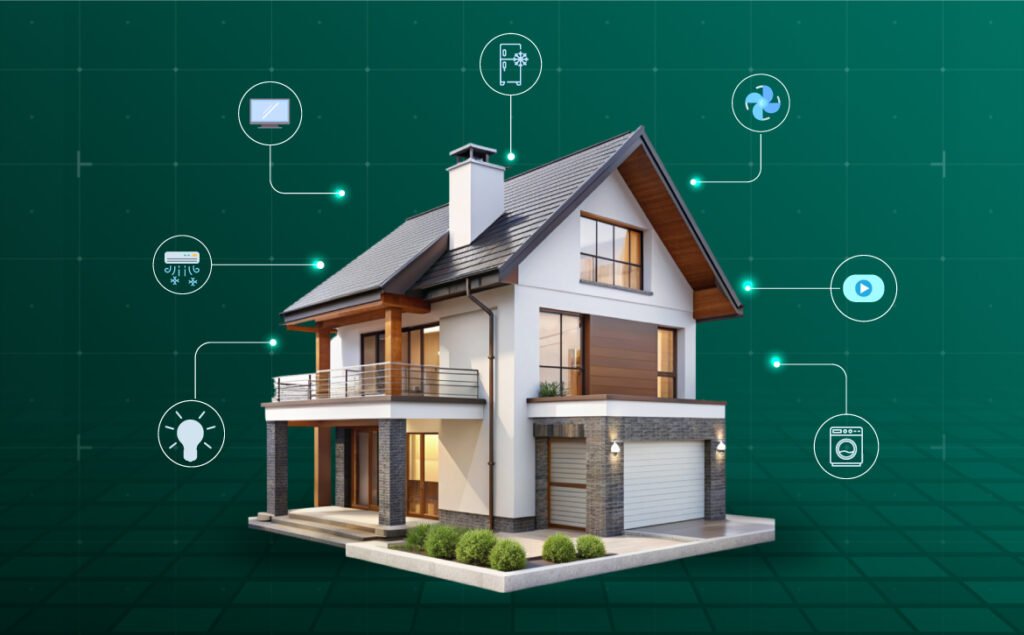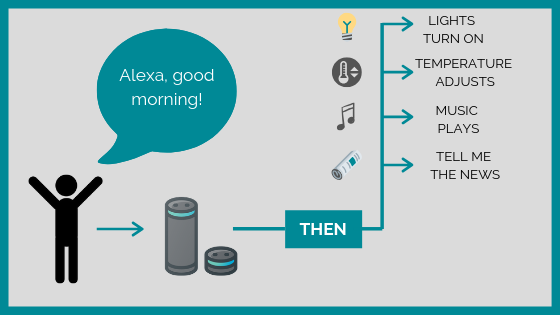So, you’re thinking about turning your house into a smart home? Great choice! A smart home can make your life easier, more comfortable, and even help save money on energy bills. But if you’re just starting out, it might feel overwhelming. Don’t worry — we’ve got you covered. This guide breaks it all down in a simple, friendly way.
What Is a Smart Home, Really?
A smart home is just a regular home, but with devices connected to the internet. These gadgets can talk to each other and to you. Imagine turning off your lights with a voice command, adjusting your thermostat from your phone, or checking in on your front door camera while you’re at work.
Smart homes come in all shapes and sizes. You can start small with a few devices or go all-in and automate nearly everything — from blinds to appliances.
Why Set Up a Smart Home?

People love smart homes for a lot of reasons. They’re super convenient. You can control your lights, music, temperature, and even your coffee machine with your phone or voice.
They also offer better security. You’ll get alerts from your cameras, doorbells, and sensors — whether you’re in the next room or across the world.
Smart homes can save you money by using energy more efficiently. A thermostat that learns your routine or lights that turn off when no one’s around help reduce utility bills.
They’re also helpful for people with limited mobility and, let’s face it, they’re just plain cool.
Step 1: Choose Your Smart Home Ecosystem
Before buying any gadgets, decide which system you want to build around. The big three are Amazon Alexa, Google Assistant, and Apple HomeKit (Siri).
Pick one that works best with the devices you already own. If you’re using an iPhone and love Apple products, HomeKit might be your best fit. Already have an Echo device? Then Alexa makes sense. Google users often find Google Assistant the smoothest option.
Each ecosystem has a central app that lets you control and group devices. To keep things simple, try sticking with one ecosystem.
Step 2: Start Small — Pick One or Two Devices
It’s tempting to buy everything at once, but you don’t need to. Start small. Begin with a smart bulb, a plug for your coffee machine, or a smart speaker like an Echo or Google Nest.
These devices are easy to set up, affordable, and show you what a smart home can do. Once you try them, you’ll probably want more.
Step 3: Set Up Your Smart Speaker or Hub

Your smart speaker or hub acts as the brain of your smart home. Setting it up is easy. Plug it in, download the corresponding app (Alexa, Google Home, or Apple Home), and connect it to your WiFi.
Then link your account — Amazon, Google, or Apple — and you’re all set. Try giving it a simple command like “What’s the weather?” or “Play music.” It’s fun and incredibly useful.
Step 4: Add Smart Devices One by One
Once your hub is up and running, start adding more gadgets. Look for devices labeled “Works with Alexa,” “Compatible with Google Assistant,” or “Supports HomeKit.”
Add devices like smart plugs, bulbs, locks, cameras, thermostats, and doorbells. Many come with step-by-step setup guides right in the app. You can control each one individually or link them together in clever ways.
Step 5: Automate and Create Routines

Here’s where smart homes really shine — automation. You can create routines where multiple actions happen with one trigger.
For example, say “Good morning,” and your lights turn on, your speaker plays the news, and your coffee starts brewing. Or say “Good night,” and the lights shut off, doors lock, and the thermostat lowers.
All of this can be set up through your app. Choose a trigger (like a time of day, voice command, or motion detection) and then assign the actions you want to happen.
Step 6: Secure Your Smart Home
With all these connected devices, security is a must. Always use strong, unique passwords for your accounts and enable two-factor authentication.
Keep your devices and apps updated with the latest software. Consider setting up a guest WiFi network just for your smart devices. That way, if one is compromised, the rest of your home network stays protected.
Also, be cautious about ultra-cheap gadgets from unknown brands. Security might be an afterthought for them.
Step 7: Expand Over Time
Once you get comfortable, you can gradually add more smart devices to suit your needs. Maybe install smart sensors on doors and windows that alert you when they’re opened. Smart blinds can adjust automatically depending on the time of day or sunlight. A smart garage door opener can be controlled from anywhere.
You can even upgrade your kitchen with smart appliances like coffee makers, ovens, and fridges. Leak detectors will alert you to water problems early. Smart ceiling fans and thermostats help maintain comfort while saving energy.
Your smart home will grow and evolve with you — there’s no need to rush.
Budget-Friendly Tips for Beginners
Smart home tech doesn’t have to be expensive. Look for deals during major sales like Black Friday or Prime Day. Always check that the devices you buy are compatible with your chosen ecosystem.
Refurbished products from reputable brands can save you a lot. And don’t underestimate the power of a smart plug — it can turn even an old lamp into a smart one.
Advanced Smart Home Ideas (For Later)
Once you’re comfortable with the basics, explore advanced options. Try using IFTTT (If This Then That) to connect apps and services in custom ways.
You could also get a dedicated hub like Samsung SmartThings to unify all your devices. Create “Scenes” or “Zones” where one command can set multiple actions — like dimming the lights, closing the blinds, and turning on your TV for movie night.
Track your energy usage in real-time, or set up smart speakers and lights to respond to your voice during a workout or party.
Common Questions Beginners Ask
Do I need to be tech-savvy?
Not at all. Most devices are easy to set up and come with clear instructions.
What happens if my WiFi goes out?
Some smart devices won’t work remotely, but many will still function manually. Lights, for instance, can still be turned on with a switch.
Are smart homes expensive?
They can be, but they don’t have to be. Start small. A smart bulb or plug can cost under $20 and still make a difference.
Can I mix and match brands?
Yes, as long as they support your chosen system like Alexa, Google Assistant, or HomeKit.
What’s the difference between smart and automated?
Smart means you can control it manually with a phone or voice. Automated means it works on its own, based on rules or triggers you set.
Final Thoughts
Building a smart home isn’t hard — it just takes one step at a time. Pick a system, try one device, and grow from there. Before you know it, your home will be more efficient, secure, and comfortable.
Experiment. Have fun. And don’t worry if you hit a snag — there’s always a guide, video, or forum ready to help.

